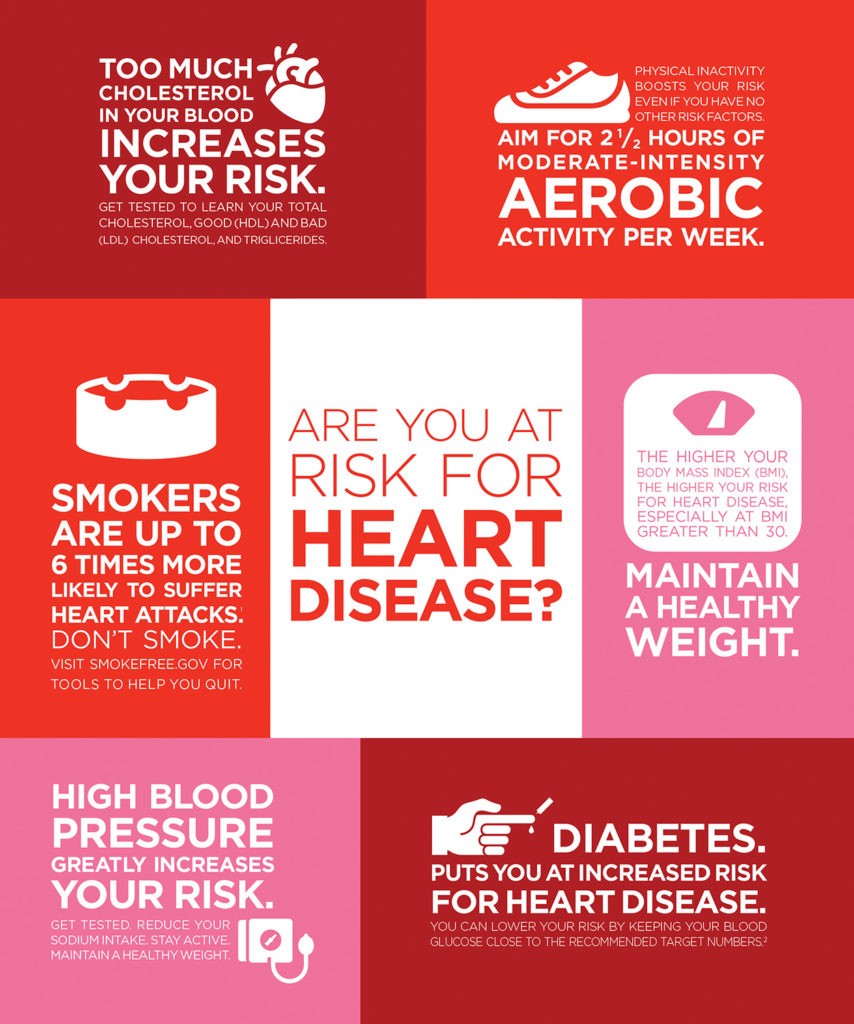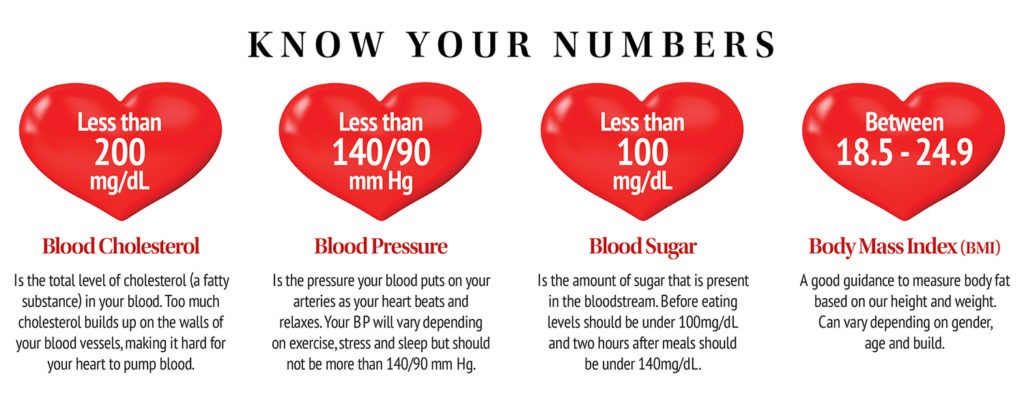Be Heart Smart

The Gift that Keeps on Giving is a Healthy, Beating Heart
Lowering blood pressure and cholesterol levels are among a few ways to never miss a beat when it comes to keeping your heart healthy.
There are certainly copious amounts of numbers we have to be aware of in our lives: phone numbers, birth dates, social security numbers, bank account numbers, addresses and more. Our lives may at times seem overpopulated by numbers. However, there are some numbers you cannot afford to overlook and those numbers pertain to your health, and more specifically to your heart. Yes, that ticker of yours requires a few numbers of its own to stay in healthy operation. But do you know where to find those numbers or what they even mean? It’s not exactly a secret code, but it may take a phone call (more numbers!) to your doctor to get you started on the right track.
If you are serious about your overall health, you most likely schedule an annual physical with your doctor. As part of that routine physical, he or she will probably check your blood pressure and administer a blood test that will reveal more insight into how your body is performing. Part of that test should include information related to your cholesterol levels and blood glucose levels. While it is important for your doctor to have access to that information so he or she can suggest certain positive lifestyle changes if needed, it is equally imperative for you to know and understand those numbers, especially if they are moving in the wrong direction.
Having these numbers at your disposal are vital to arm yourself on the road to good heart health, as they will allow you and your healthcare provider to determine your risk for developing cardiovascular disease by atherosclerosis. This includes conditions such as angina (chest pain), heart attack, stroke (caused by blood clots) and peripheral artery disease (PAD).

According to Harvard Health Publishing and Harvard Medical School, cardiovascular disease is the number one cause of death in adults, both male and female, in the United States. However, the disease can present differently in men than in women. In men, a heart attack usually initiates with a sudden rupture of cholesterol-filled plaque in a coronary artery, which then precipitates a blood clot. On the other hand, women are more likely to develop disease in the smaller vessels, where blockages happen within the tiny vessels in the heart muscle as opposed to the large, surface arteries. Whereas men may experience that sudden discomfort with coronary blockage, women lean more towards having a “silent” heart attack, with no overt symptoms at all. Some women may be diagnosed with classic angina, which is heart-related chest pain, but their major coronary arteries can look completely normal, so they may be told, “It’s not your heart.” However, those women could still sustain a heart attack if the condition is left untreated.
Nearly one third of Americans have high or borderline high blood pressure. It is a growing issue, but it can be treated without medication if you are willing to put in the work. This will require a three-fold approach involving diet, exercise and weight loss. By incorporating this plan of action into your lifestyle, you have the potential to lower your blood pressure by as much as 10 to 14 mmHg overall… and you don’t have to become a proverbial gym rat to see the results!
For your cholesterol to fall into the healthy range, it should be less than 200 mg/dL. Your LDLs, the cholesterol that is harmful to your health, should be less than 100 mg/dL and your HDLs (the “good guys”), should be more than 60 mg/dL. If your numbers miss the mark, then it might be time to speak with your doctor about focusing on your eating and exercise habits. Once you begin a new exercise regimen, your HDLs should increase. Every step counts, too. You can walk as little as just two hours in a week and improve your cholesterol.

And then there is the food you consume. If you subscribe to a 2,000 calories per day diet, be sure that your total fat intake is limited to 50-to 70 grams. However, be aware of the different kinds of fats. Strive to eliminate trans fats completely and reduce the saturated fats in your diet to less than 16 grams a day. Your daily menu should include foods with omega-3 and omega-6 fatty acids, such as fish, nuts and vegetable oil.
What about your blood pressure? If it is creeping upwards, it is time to consider that aforementioned exercise program. Walking makes your blood vessels more flexible. Aim for a brisk 30-minute walk five days per week. This alone can lower your blood pressure by about 5mmHg. Plus, you should begin to see the weight fall off, too. By losing 22 pounds, you can lower your blood pressure by an average of 8 mmHg. It’s no secret that exercise can increase the quality and length of your life.
Additionally, think about how much salt you might be consuming on a daily basis. Sodium in large quantities is a strong contributor to high blood pressure. Surprisingly, the average American consumes roughly 4,000 mg of sodium every day, when in reality it should be limited to no more than 1,500 mg per day. One of the easiest ways to get rid of excess sodium in your diet is to eliminate processed foods.
Don’t forget to consider your weight. Studies have shown nearly half of Americans are considered overweight or obese based on their body mass index, or BMI. Extra weight can contribute to increased blood pressure and cholesterol. (If you are interested in calculating your BMI, go online at americanheart.org/bmi). Again, your best defense against obesity includes exercise and a healthy diet, coupled with routine physicals with your doctor.
Keeping your heart healthy is vitally important. To that end, you should be aware of the risk factors – those you can control, and, well, those that you really cannot control – but by taking charge of the ones you can control, you will put yourself in a much better position to remain champion of your heart health and general health.
The risk factors you can control include high blood pressure, smoking, high blood cholesterol, inactivity, obesity or being overweight, and diabetes. The harder to manage risk factors include your age, gender, race and family history. Plus, if you have had a previous stroke or heart attack, that does put you at greater risk for future heart issues.
In short, pay attention to your personal heart risks and make the necessary lifestyle changes needed to maintain a healthy heart to give yourself an edge in staying healthy. As always, consult with your health care provider on any issues of concern to you, and together you can establish a plan of care tailored for your best interests.
Sources: familycircle.com, goredforwomen.org, herheart.org, health.harvard.edu.






